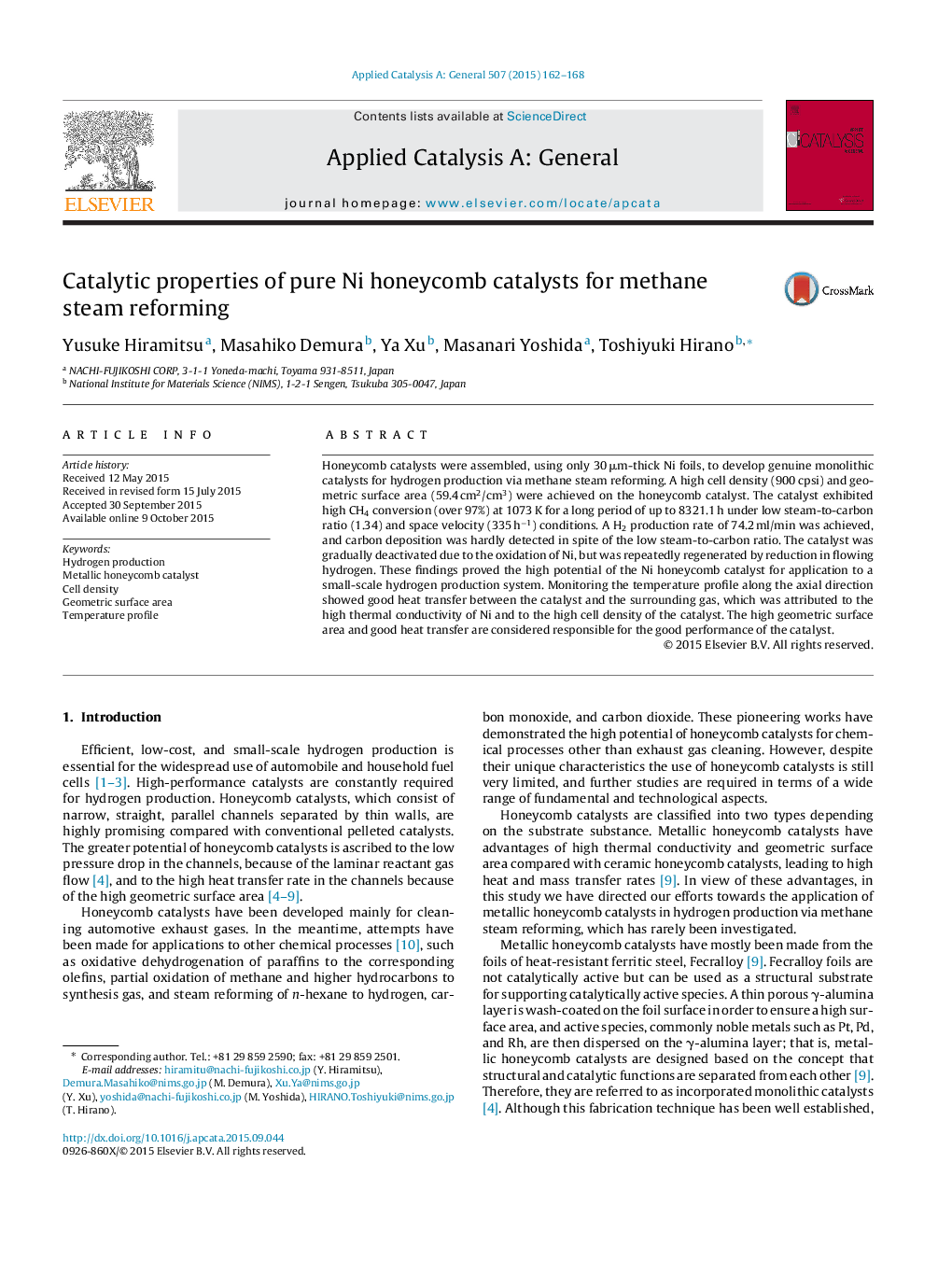| Article ID | Journal | Published Year | Pages | File Type |
|---|---|---|---|---|
| 39177 | Applied Catalysis A: General | 2015 | 7 Pages |
•Honeycomb catalysts were assembled using only pure Ni foils for hydrogen production via methane steam reforming.•A high cell density (900 cpsi) and geometric surface area (59.4 cm2/cm3) were achieved on the catalyst.•The catalyst exhibited high CH4 conversion (over 97%) at 1073 K for a long period of up to 8321.1 h under low S/C and SV conditions.•The catalyst was readily regenerated in flowing hydrogen.•Temperature profile along the axial direction showed a good heat transfer between the catalyst and the surrounding gas.
Honeycomb catalysts were assembled, using only 30 μm-thick Ni foils, to develop genuine monolithic catalysts for hydrogen production via methane steam reforming. A high cell density (900 cpsi) and geometric surface area (59.4 cm2/cm3) were achieved on the honeycomb catalyst. The catalyst exhibited high CH4 conversion (over 97%) at 1073 K for a long period of up to 8321.1 h under low steam-to-carbon ratio (1.34) and space velocity (335 h−1) conditions. A H2 production rate of 74.2 ml/min was achieved, and carbon deposition was hardly detected in spite of the low steam-to-carbon ratio. The catalyst was gradually deactivated due to the oxidation of Ni, but was repeatedly regenerated by reduction in flowing hydrogen. These findings proved the high potential of the Ni honeycomb catalyst for application to a small-scale hydrogen production system. Monitoring the temperature profile along the axial direction showed good heat transfer between the catalyst and the surrounding gas, which was attributed to the high thermal conductivity of Ni and to the high cell density of the catalyst. The high geometric surface area and good heat transfer are considered responsible for the good performance of the catalyst.
Graphical abstractFigure optionsDownload full-size imageDownload high-quality image (131 K)Download as PowerPoint slide
